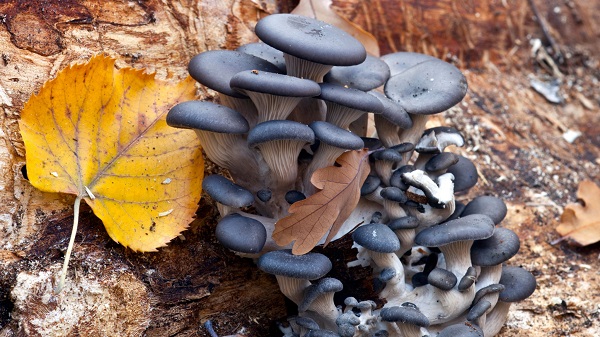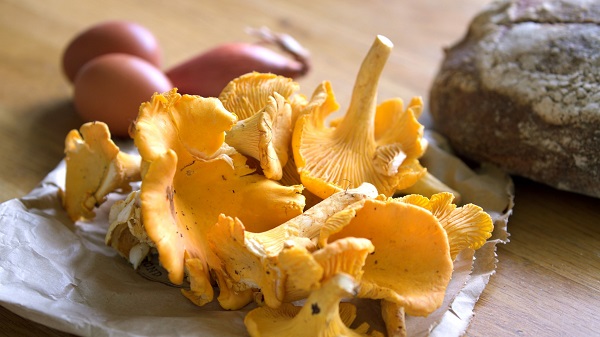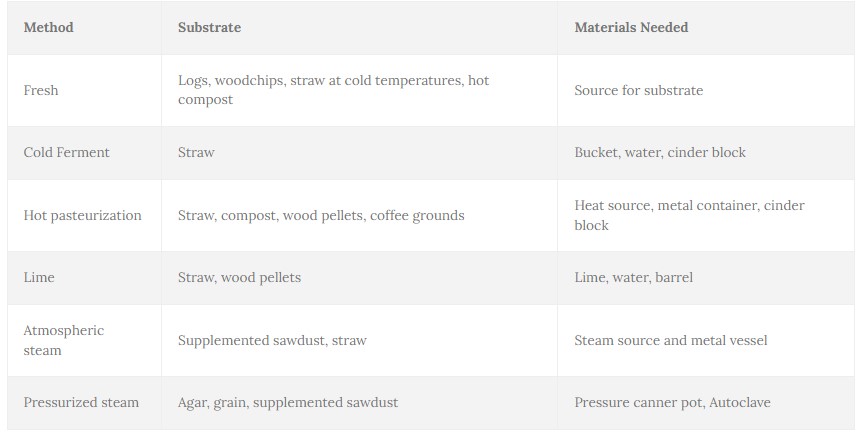Who would’ve thought that the pesky mushrooms that grow in your mulch can be a good source of income? Learning how to grow gourmet mushrooms can make you use your passion for gardening in a more profitable endeavor.
Unlike crops and fruits, mushrooms don’t need a lot of overhead costs. They can fit in a small space, and some varieties can grow within weeks. High-end restaurants provide a constant demand for gourmet mushrooms, leading to endless opportunities for you to earn.
Before you become a mushroom enthusiast and part of the mushroom-growing community, you must first know more about gourmet mushrooms and why they have a higher price than other mushrooms.
(You could use the table of contents below to jump to the sections that are most important to you.)
What is a Gourmet Mushroom?
Gourmet mushrooms are a classification of edible mushrooms that have a unique smell, taste, rarity, and level of cultivation difficulty. Many fine dining restaurants serve exquisite dishes that use gourmet mushrooms. Since they are challenging to grow, there’s a high demand, but few can successfully produce mushrooms with restaurant-quality features.
With that, small growers like you have an opportunity to earn more with a few gourmet mushrooms that you’ll grow. One of the popular types of gourmet mushrooms is truffles.
A pound of truffle costs around $4000 because of its rarity and unique taste and aroma. It takes approximately six years to cultivate truffles. Their quality and aroma degrade fast, and chefs must serve them immediately in restaurants to meet the ideal taste.
A man in Italy found a giant four-pound white truffle auctioned for a whopping $1 million. Climate change makes gourmet mushrooms like truffles harder to grow, and some mushroom farming experts fear that they’ll be extinct in the coming years.
Why Are They Profitable?
Fungiculture or mushroom farming is difficult in so many ways. Mushrooms, in general, need a humid but sterile environment to grow. They thrive in damp substrates, which is also the ideal growing environment for bacteria, fungi, and other types of undesired mushrooms.
Unlike fruits and vegetables, the quality of mushrooms degrades after harvest. So, they spoil faster. The appearance should also pass the quality checks of the consumers. Also, gourmet mushrooms like oyster and shiitake varieties are becoming a staple in household dishes.
The growing demand due to the increase of vegan and vegetarian diet advocates opens the door for small-scale and aspiring mushroom growers.
Where To Sell Gourmet Mushrooms
If you’re new to mushroom farming, you may find it hard to sell your gourmet mushrooms to just anyone. You have to sell them to people or establishments that know the value of gourmet mushrooms. These include:
- Local restaurants
- Vegan and vegetarian farmer’s markets
- Grocery stores
- Set up an online store
- Niche communities
The earnings of small mushroom growers are at a steady pace, especially with oyster mushrooms. As you learn to grow one variety, you will also learn how to cultivate other gourmet mushroom varieties.
So, later on, you can cater to the different demands of customers.
What Are Considered Gourmet Mushrooms?
Apart from learning how to grow gourmet mushrooms, you have to select the ones you can market after harvesting them. You may want to start with some varieties that grow fast and those you can sell faster before tackling the pricier mushroom varieties with more challenging growing methods.
Here are the gourmet mushrooms that you can start if you want to grow mushrooms at home:
1. Oyster Mushrooms (Pleurotus Ostreatus)

Oyster mushrooms or pearl oyster mushrooms are the most common type of gourmet mushrooms that you can find in home-cooked meals in middle-class restaurants. They are part of traditional Chinese, Korean, and Japanese cuisines.
Oyster mushrooms have a savory flavor that blends well with stews or any stir-fry dish. They are tender and juicy on every bite since they absorb all the wet ingredients from dishes.
The popular recipes that use oyster mushrooms are:
- Stir-fried oyster mushrooms (Neutari-beoseot-bokkeum/느타리버섯볶음)
- Grilled king oyster mushrooms
- Chinese Stir-Fried Oyster Mushrooms
- Fried oyster mushroom (Fried chicken alternative)
Growing oyster mushrooms is a profitable option because they are widely used in home settings and a staple in a vegetarian and vegan diet. They have several varieties that also have a growing market. These include:
Pink Oyster Mushrooms (Pleurotus Djamor)

Pink oysters are becoming a staple simply because of their unique color. They are a tropical variety that thrives in warm and humid temperatures. Mushroom growers like them because they provide heavy yield and fast colonizers.
Three days after harvest, pink oysters develop a seafood-kind of odor that makes them more delectable to consume. However, they have a short shelf-life, lasting 5 to 6 days. Past their shelf-life, they become soggy and no longer viable for drying.
Pink oysters are sensitive to cold and not suitable to be in a fridge. It is rarely available in grocery stores because of its short shelf-life, but it is available from fresh mushroom suppliers in the US like Southwest Mushrooms and Ostrom Mushroom Farms.
Golden Oyster Mushrooms (Pleurotus Citrinopileatus)

Golden oyster mushrooms are well-loved for their cashew-like flavor. They have a short shelf-life like pink oyster mushrooms, making it hard for them to reach supermarkets. They are delicate and grow during the cold seasons.
Golden oyster mushrooms provide a heavy yield and grow within two weeks. Due to their fresh and earthy taste, they blend well in stir-fry and grilled dishes like mushroom pesto tartine with parmesan crisps.
Blue Oyster Mushrooms

One of the best oysters to grow is the weird-looking but tasty blue oyster mushrooms. They have grayish gills and blue caps and love a humid environment like other varieties of oyster mushrooms. People love the color of blue oysters because it’s rare to see bluish ingredients in your dish.
Blue oysters have the longest shelf-life among the three mushrooms, lasting around ten days. They possess a seafood-like flavor which to some tastes like a subtle anise after-taste. They grow big caps vigorously, producing a lot of yields.
2. Shiitake Mushrooms

Shiitake mushrooms are probably among the common mushrooms in the market that you will most likely hear about in Japanese and Korean cuisine. They have a smoky and savory flavor that blends well on seafood, beef, and pork stews. You will often see them as flavor enhancers to the following popular dishes:
- Korean bulgogi
- Japchae
- Bibimbap
- Shiitake mushroom udon noodle soup
- Shiitake mushroom jerky
- Shiitake Ramen
Most people consume shiitake mushrooms because they contain eritadenine. Eritadenine is a compound known to reduce inflammation and cholesterol levels in our bodies. They also improve immune health and have anti-cancer properties.
You can sell shiitake mushrooms fresh or dried. Either way, you will have enough customers for them, especially in local Asian supermarkets in the US.
3. Gucchi Mushrooms or Morel Mushrooms (Morchella esculenta)

Gucchi mushrooms are one of the most expensive gourmet mushrooms that can cost around $400 per 2.2 lbs. They are pricey since they’re only available in the wild (fresh ones) and for their unique flavor. They are complicated to grow in commercial production because they only thrive at the foothills of the Himalayas.
The locals of the Himalayas hunt them and dry them over the fire to sell as dried mushrooms. They are elusive and solitary mushroom varieties that often grow during May in the US, thus leading to their name May mushrooms. Most mushroom growers see them grow in burned areas and thrive from the ash and lime in the soil.
4. Chanterelle Mushrooms

Chanterelle mushrooms are next to morel mushrooms when it comes to rarity. They are hard to grow commercially and only thrive on the roots of well-established trees. They work in symbiosis with specific trees like oak and provide each other with the nutrients needed.
Chanterelle mushrooms take years to inoculate in the soil, leading to a decade of cultivation. They are available as dried mushrooms in the market. They have a smoky-buttery flavor that goes well with cream sauces and scrambled eggs.
You’ll know that you have an authentic chanterelle mushroom at hand if they possess an apricot-like odor.
5. Enoki Mushrooms or Enokitake

Enokitake or golden needle mushrooms are small long-stemmed mushrooms with small caps popularly used in Japanese and Korean cuisine. It stands out for its crunchy texture and mild fruity taste. Most Koreans add it to stews or grilled meat, while in Japanese cuisine, it is used for Nametake.
Enoki mushrooms are easy to grow and beginner-friendly. They have a shelf-life of seven days in the fridge. They grow vigorously during the cold season, producing several strands of thin-stemmed enoki mushrooms.
6. Lion’s Mane Mushroom (Hericium Erinaceus)

Lion’s mane mushrooms is a member of the tooth fungus group that has a texture similar to meat when cooked. Some say it is an ideal alternative to shellfish. Lion’s mane mushrooms have a pom pom-like structure that contains an umami-rich flavor.
Lion’s mane mushrooms are easy to grow and produce a heavy yield, literally. Unlike other mushroom varieties, they can stay in cold storage for a week. If not sold fresh, you can turn them into a powdered supplement that can promote better brain function and anti-inflammation.
In addition to its meat-like structure, Lion’s mane mushroom also contains healing properties for neurodegenerative diseases and anti-inflammatory effects that help improve depression and anxiety. A delicious popular dish that uses it is the Lion’s Mane Steak.
7. Pioppino Mushrooms (Agrocybe Aegerita)

Black Poplar or Pioppino mushroom is a popular gourmet mushroom with a mild-pork meat taste. It has a typical mushroom appearance color with its brown cap and white stem, but its flavor makes it stand out.
Pioppino mushrooms grow fast and produce a lot of yield within three weeks. They are a common ingredient in Mediterranean dishes like pumpkin risotto with mushrooms.
Did you know? Ganoderma lucidum or Reishi is a type of mushroom that contains potent medicinal properties. It is part of traditional medicine known to help cancer patients recover faster and has the potential for being a treatment for breast cancer.

Life Cycle of Mushrooms: How Do Gourmet Mushrooms Grow?
Before you start collecting sawdust and building your mushroom growing room, it is only logical to learn how mushrooms grow and the processes you have to go through to have your fancy fungus.

Mushrooms are the reproductive part of the fungus. Their gills contain billions of microscopic mushroom spores that spread in the environment. As soon as spores reach a growing medium that is moist with decaying wood, the mycelium grows.
The mycelium serves as the root system of the fungus. It takes time, temperature, and humidity for the mycelium to colonize or reach the surface of the growing medium. Once it gets moisture, oxygen, and a bit of light, the mushrooms will start to grow.
In cultivating mushrooms, you have to mimic the environment where they thrive as well as pick the kind of strains depending on the type of mushroom you want to grow.
Fancy Fungus 101: 8 Steps on How To Grow Gourmet Mushrooms
Gourmet mushroom farming is a sterile kind of job. There are a lot of microscopic contaminants that may wreak havoc on your precious mushrooms. You also have to ensure that the strain of mycelium that you get can give you your desired yield.
Ready-to-use mushroom kits or spawns blocks are now available in stores or online, containing high-quality mycelium strains to develop a higher yield.
If you are a beginner in growing mushrooms, it is best to explore fungi culture by growing different varieties from store-bought grow kits. This way, you can set your expectations and have more ideas on starting your mushroom farm.
Now, here is a typical process on how to grow gourmet mushrooms at home:
#1 Locating Your Mushroom Growing Room or Buying a Growing Tent

Mushrooms need a dark place to grow overnight. They need a little light but not direct sunlight. They also need a lot of humidity. If don’t have a room that can provide the best environment for the mushrooms, you can buy a growing tent below:
In building your mushroom grow room, you have to consider the temperature, humidity, and ventilation requirements of the mushroom variety you will cultivate.
Most mushroom growers customize their grow tents based on their needs. You may check the image below to give you some idea of where to start:
#2 Buying a Spawn
The next step after building the grow room is mushroom selection. Spawn is a cultured material that contains the mycelium of the mushroom you choose to grow. It is added to the substrate or growing medium during inoculation to begin the fruiting process.

You can make your spawns once you know more about mushrooms. As a beginner, you can buy spawn from other mushroom growers or any of the following:
- Better Fungi 100 Grams/4 oz of Blue Oyster Mushroom Spawn Mycelium
- 100 Shiitake Mushroom Plug Spawn Edible Mycelium Plugs
- 100 Grams of Portobello Mushroom Spawn Mycelium
- 100 Grams/4 oz of Lion’s Mane Mushroom Spawn Mycelium
- 100 Pearl Oyster Mushroom Spawn Plugs/Dowels
- 100 Golden Oyster Mushroom Spawn Plugs/Dowels
#3 Creating The Substrate

Mushrooms grow in decaying wood but in mushroom cultivation, they are in the form of a substrate. Your substrate is the growing medium where the mycelium will develop. In comparison to plants, the substrate is the soil for your mushrooms.
The substrates that you can use are:
- Logs
- Wood chips
- Straw
- Sawdust or wood pellets
- Coffee grounds
The best option that most small-scale growers use is sawdust pellets, particularly oak pellets. However, it all depends on what works for your mushroom spawns. You can do trial and error using different substrates.
Most professionals also recommend adding some supplements to sawdust/pellets, straw, and coffee grounds to improve the mushroom yield by adding some supplements and wheat bran.
Once the substrate is packed in bags or post, they undergo sterilization to keep your growing medium clean of any contaminants. Here is the sterilization process for every type of substrate:

Once the substrates are sterilized, they are now ready for the inoculation or in other words the ‘planting of spawn to the substrate.’
#4 Inoculation

Inoculation is the process where you add the spawn to each substrate. It is the most crucial part of the process because everything should be sterilized. Otherwise, your spawn may come with other contaminants like molds and other stuff that can waste your substrate and spawn.
Do this process in a filtered area and use alcohol to wipe all the materials you will use. Once the spawn has been added to the substrate, you should fill it up with air and seal it to allow the colonization of the spawn.
Colonization is the process where the fungus starts to grow around the substrate until it occupies every space and surface.
#5 Incubation

The incubation period is the time when the mycelium is given enough time to spread throughout the substrate. During this process, you will see the substrate change in color. It may turn from brown to white after a few days.
The speed of fungus colonization in the substrate depends on the type of substrate and the mushroom strain in your spawn. The fastest incubation happens in a sawdust substrate with approximately 10 to 20 days, and the longest is on logs which takes months to a year.
#6 Initiation or Waking up The Mushrooms

Initiation is the process where you are now exposing the mycelium-filled substrate to oxygen, light, and humidity. There are two ways to initiate your mushroom substrate: cutting and shocking.
Cutting is the process where you literally cut the top portion of your substrate, spray it with water, and place it in a humid area or a grow tent. Shocking is the process where you need to submerge the substrate in water for several hours or days.
#7 Fruiting

Fruiting is the fun part of mushroom cultivation because you will see how your mushrooms grow by the inch overnight. The fruiting period depends on every gourmet mushroom variety. Some grow in three weeks, while others take about a month or more.
#8 Harvest Time!

After several weeks, you can now harvest the fruits of your labor. Unlike plants, the quality of mushrooms starts to degrade as soon as you harvest them from the substrate. Some mushrooms can only last for two to three days in storage, while others can last for weeks to months.
Gourmet mushrooms, in particular, have the shortest shelf-life, which is one of the reasons why they’re expensive. So as soon as you harvest, consume them immediately or deliver them to your first customer as soon as possible.
Mushroom growing can be intimidating at first due to some scientific processes. However, when you start to get the hang of it, it’s actually as fun as gardening.
Plus, you get several batches of mushrooms in one substrate. Talk about sustainability and, of course, profits!
Final Thoughts
We hope that this post helped you see the wonder of mushrooms and the fun of growing them. The process may look very scientific, but they are easy to grow and care for.
Let us know in the comments which type of gourmet mushrooms you tried to grow at home. Also, please don’t forget to share this post with your bored friends who want to try something new this growing season,
Enjoy growing those shrooms!
